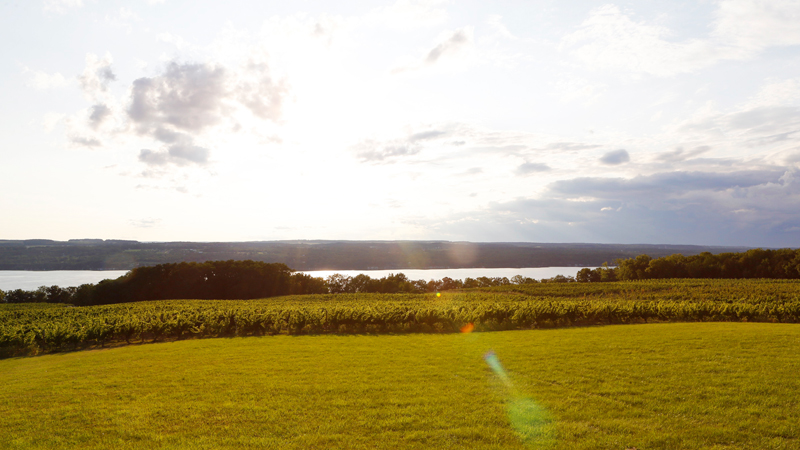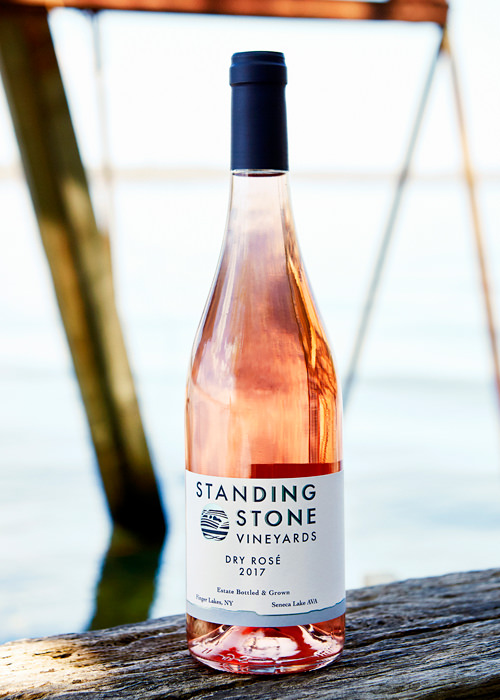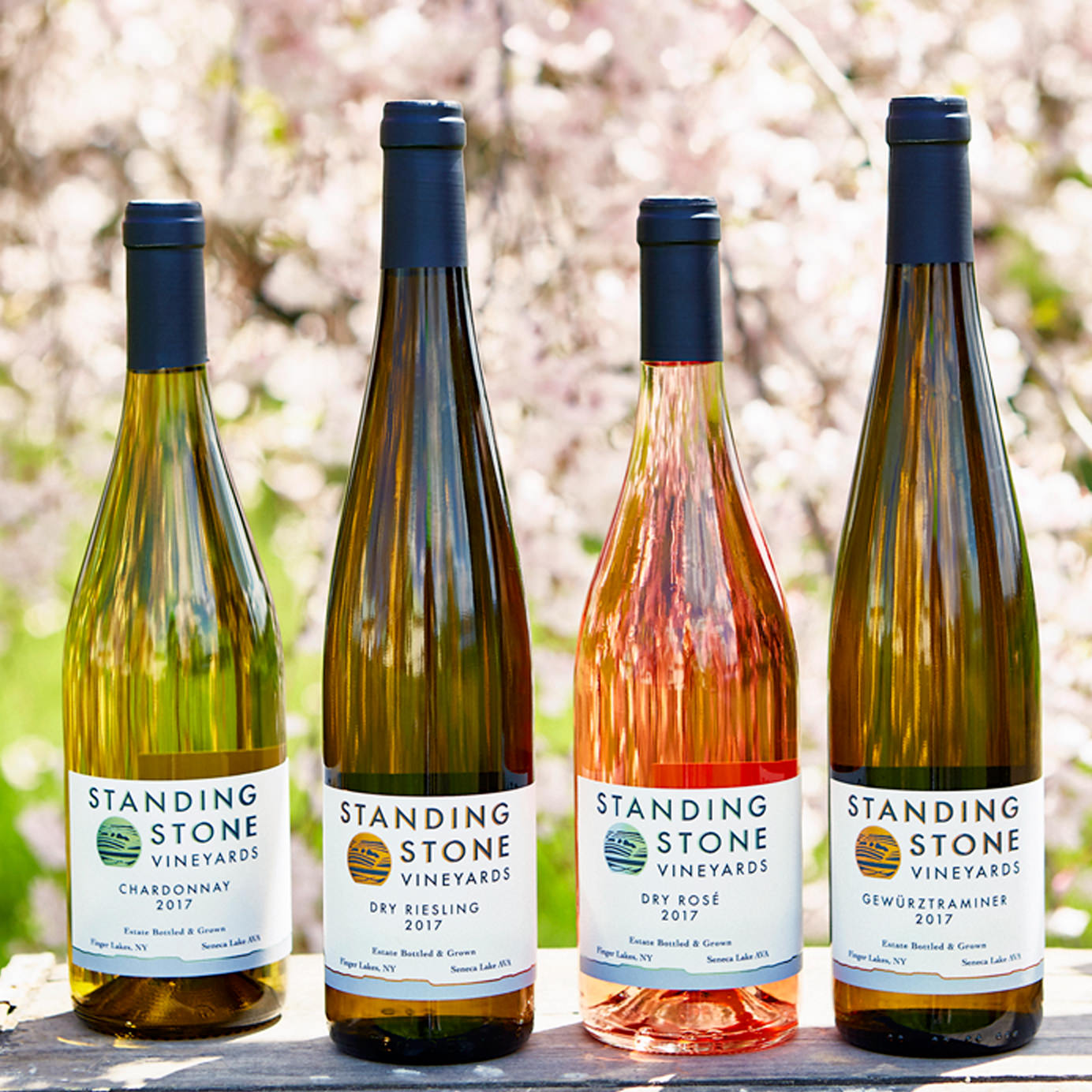Winemaker Jess Johnson spent her summer the way most of us do: with glass after glass of chilled rosé. But her chosen bottle, a 2017 vintage from the Finger Lakes’ Standing Stone Vineyards, is not just any pale, Provencal approximation. It’s crafted of 100 percent Saperavi, an ancient grape from the Republic of Georgia.
Saperavi is usually used in an inky, near-black red wine. Standing Stone’s 2017 vintage marks the first time the winery was able to make the strong-willed variety into rosé. As more wineries in New York and down America’s East coast are embracing the grape, Johnson is betting it has a broad, colorful future in the U.S.

A bold, acidic vitis vinifera variety, Saperavi has been planted in very few locations outside Georgia and other former members of the U.S.S.R. Its grapes are oblong in shape and a deep, dark purple color that stains everything in sight. In fact, the word Saperavi roughly translates to “dye.”
The resulting wine is highly acidic, but surprisingly doesn’t have to be aged as long as other red wines — it’s very much a drink-now red. Johnson explains it can cover “almost all wine drinking spectrums.”
Standing Stone planted its first Saperavi vines in 1994, but the first vintage wasn’t made until 2004. The winery is fascinated by the grape. Winemakers have blended it with Cabernet Sauvignon, Merlot, and Petit Verdot; bottled a 100 percent Saperavi wine; and petitioned the U.S. government to recognize the grape.
“There is still a lot to learn from the vines and fruit each year,” Johnson says. She has worked with Saperavi for six years. “There’s something different with each new vintage.”
For example, the grape doesn’t need much aging in oak barrels. Johnson typically ages red wines in oak anywhere from 12 to 18 months, but she realized that Saperavi didn’t need the extra months in barrel. The current, 2016 Saperavi was aged in older American and Hungarian oak for only six months.
“Saperavi develops in a different way when compared to the other red varieties,” Johnson says, “And that has been helpful in the overall understanding of Saperavi.”
She admits that the high levels of acid in the grape can be a challenge, but she and her team have chosen to embrace it. That lead them to experiment with a rosé version with the 2017 vintage.

An abundant Saperavi harvest coincided with a major managerial development. In 2017, Standing Stone was purchased by a renowned Finger Lakes winery, Hermann J. Wiemer.
Johnson sought the expertise of the Wiemer winemakers and crew. Coupled with her own growing knowledge of Saperavi, she bottled the first rosé made entirely from Saperavi.
Because the pulp of the grape is actually red, no skin contact is needed in the production process to make the rosé pink. The wine maintains the grape’s bright acidity, which reinforces the tart fruit.
It’s an exciting though somewhat divisive wine. Its tartness can alternatively be deemed as welcoming or off-putting, and it certainly commands food rather than being a casual sipper.
Johnson says it’s mostly garnered rave reviews. “Winemaking can be about trial and error, but the first vintage of Saperavi rosé has been a success,” she says. “This rosé demonstrates that Saperavi is a flexible variety and can be expressed in many forms.”
As the vines continue to mature, Johnson hopes to see what else she can do with traditional Georgian winemaking practices, including qvevris, the large earthenware vessels used to age and store wine.
Other wineries, such as Tbilvino and Badagoni, both located in Georgia’s Kakheti region, have made Saperavi into rosé. Because the grape is relatively unknown in the United States, Standing Stone’s success could inspire others experimenting with Saperavi to try their hands at a pink bottling.
Johnson is excited to see Saperavi popping up at other vineyards in the region. Dr. Konstantin Frank, McGregor Vineyard, and Shalestone all have plantings, and Johnson knows of others coming to Virginia and on the West Coast.
“I’m certain we’ll be seeing more Saperavi wines coming out of the Finger Lakes soon,” she says. The future is flush with possibility.
